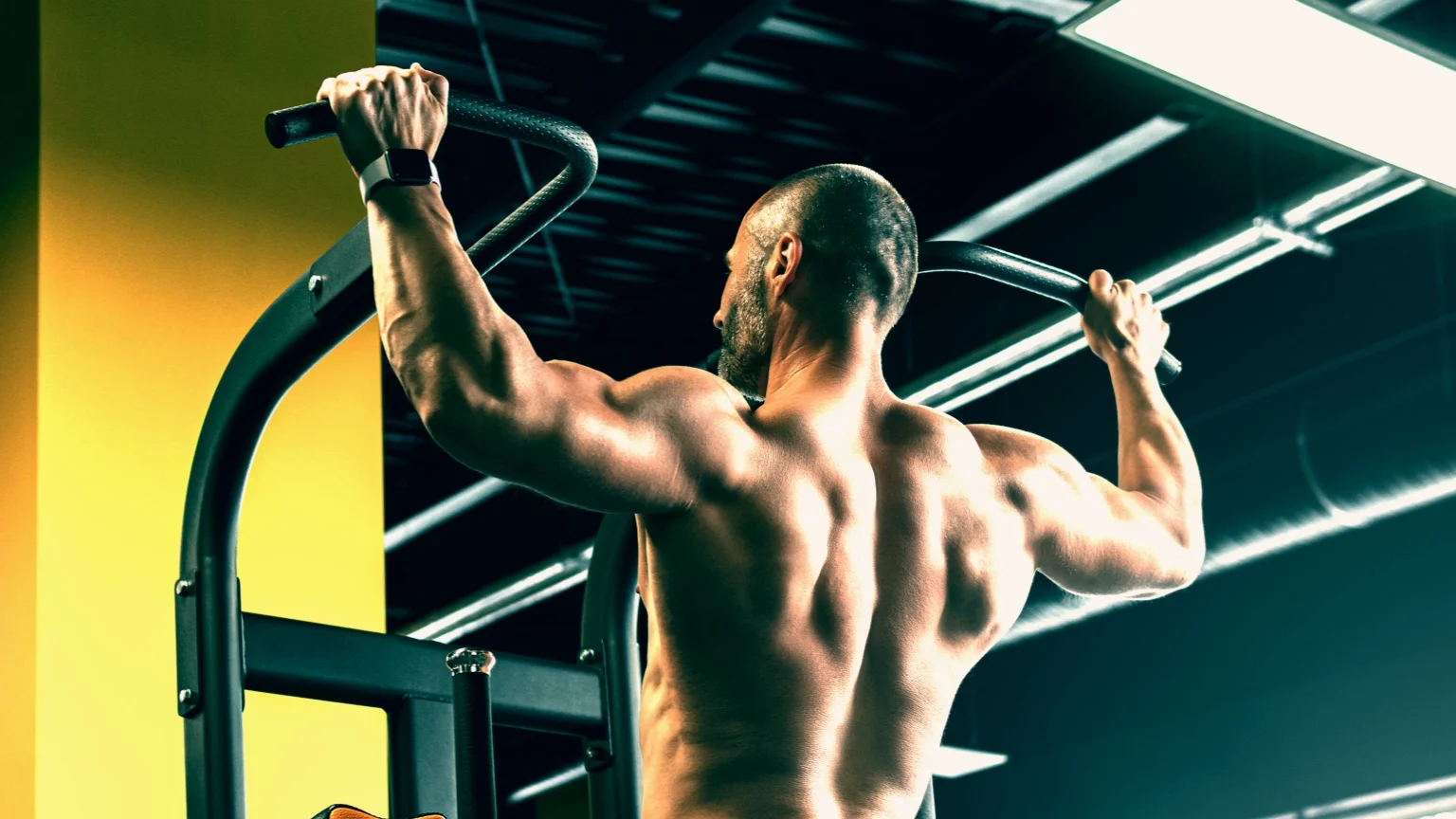
New
Build a workout routine for your personal fitness level and goals
Create a personalized workout plan using Gym Geek’s new AI tool. Gym Geek AI can generate a single workout or a structured routine for any fitness goal.
Powered by
Split workout routines target different muscle groups on each day, allowing you to hit each muscle twice a week. The most popular workout routines have a dedicated pull day, targeting your back, biceps and rear delts.
Pull day is part of the push pull legs (PPL) workout routine, which you can follow 6 days, 5 days or 3 days per week. Because PPL sees you work each muscle group twice per week, the routine maximizes your training frequency and enables you to achieve a higher volume in your routine.
Our pull day workout starts with compound exercises, including lat pulldowns and bent over rows, before moving onto isolation exercises for your biceps.
As part of a push pull legs split
A pull day workout is normally part of a 6 day or 5 day PPL split. A PPL split divides your routine into 3 types of workout:
- Push days – Exercises targeting your chest, shoulders and triceps, including bench press, shoulder press and tricep extensions. See our push day workout for a guide.
- Pull days – Exercises targeting your back, biceps and rear delts, including lat pulldowns, pull-ups and face pulls.
- Leg days – Exercises that work your lower body, including deadlifts, squats, lunges and calf raises.
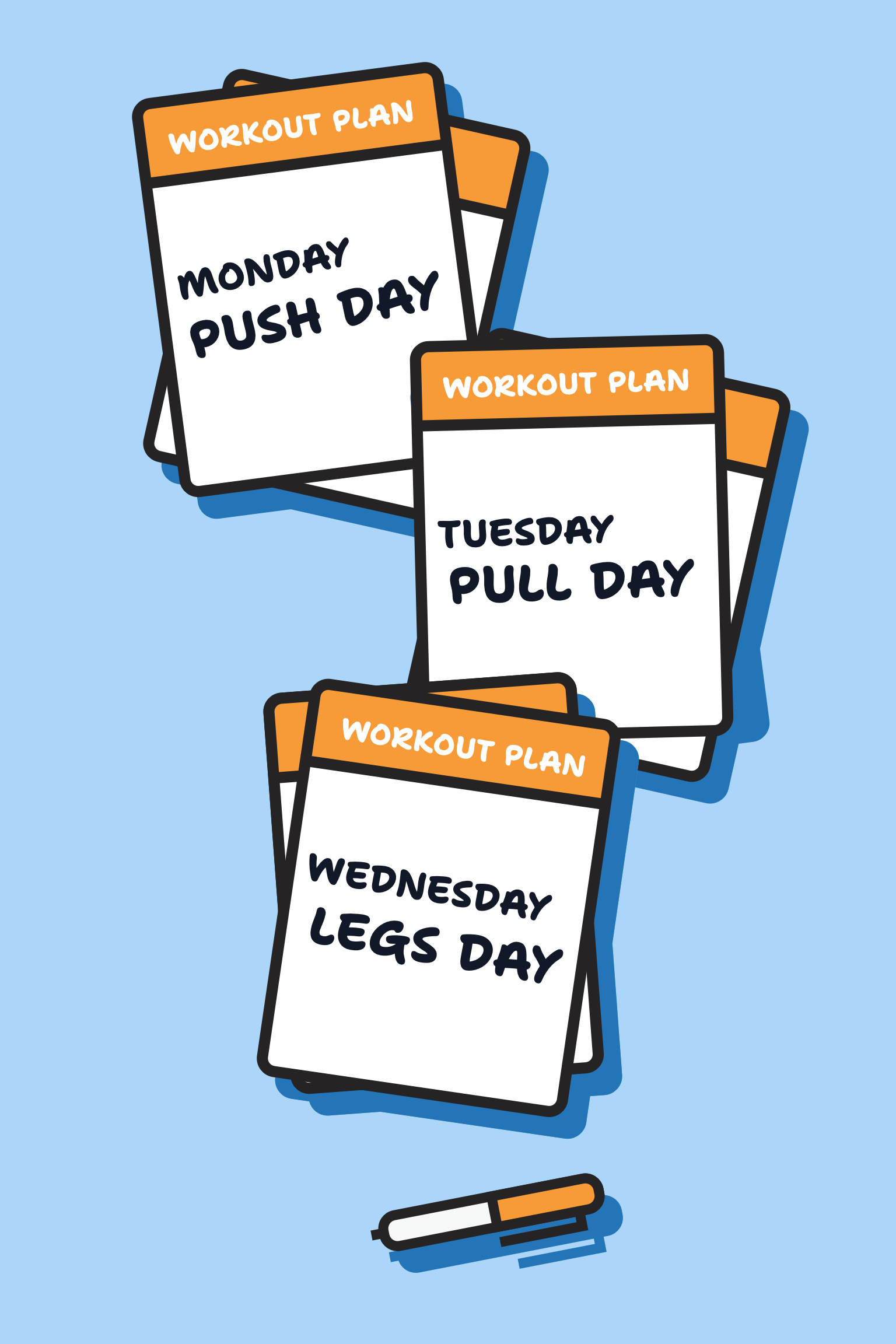
Pull day primarily focuses on your back and biceps. Our back and biceps workout routine is an alternative to pull day that puts more emphasis on building upper body strength.
Importantly, we also target your rear deltoids with pull day. The other delts (lateral and front delts) are worked with pushing exercises like bench press and shoulder press. But your rear delts are most effectively worked on pull day.
What is a pulling exercise?
Pulling exercises are movements that pull a weight towards your body, rather than pushing a weight away from your body. Pulling your body up, like in pull-ups, has the same effect.
These exercises usually target your upper body. Specifically, they work your back, biceps and parts of your shoulder, and they tend to engage multiple muscle groups at the same time. Strengthening your back and biceps can improve your posture and reduce the risk of back injuries.
Examples of pull exercises include lat pulldowns, bent over rows, pull-ups and chin-ups, and cable face pulls. Pull exercises can be performed using barbells, dumbbells, resistance bands or even your own body weight.
Muscles worked on pull day
Latissimus dorsi (lats)
Your latissimus dorsi (lats) are large muscles that run along the sides of your middle-to-lower back. This is the largest muscle in your back and gives your back its distinctive V-shape.

Lats play a key role in pulling your arms down when extended above your head. Strong lats help with everyday activities and exercises like swimming and pull ups.
Being the largest muscle in your back, it’s important that your training puts a lot of emphasis on your lats. That’s why all the compound exercises in Gym Geek’s pull day – including lat pulldowns, bent over rows and pull-ups – target your lats.
Trapezius (traps)
Your trapezius (traps) muscles are the large triangular-shaped muscles that extend all the way over the back of your neck and deltoids, extending right down to the upper middle part of the back. It is divided into three parts called the upper, middle and lower traps.
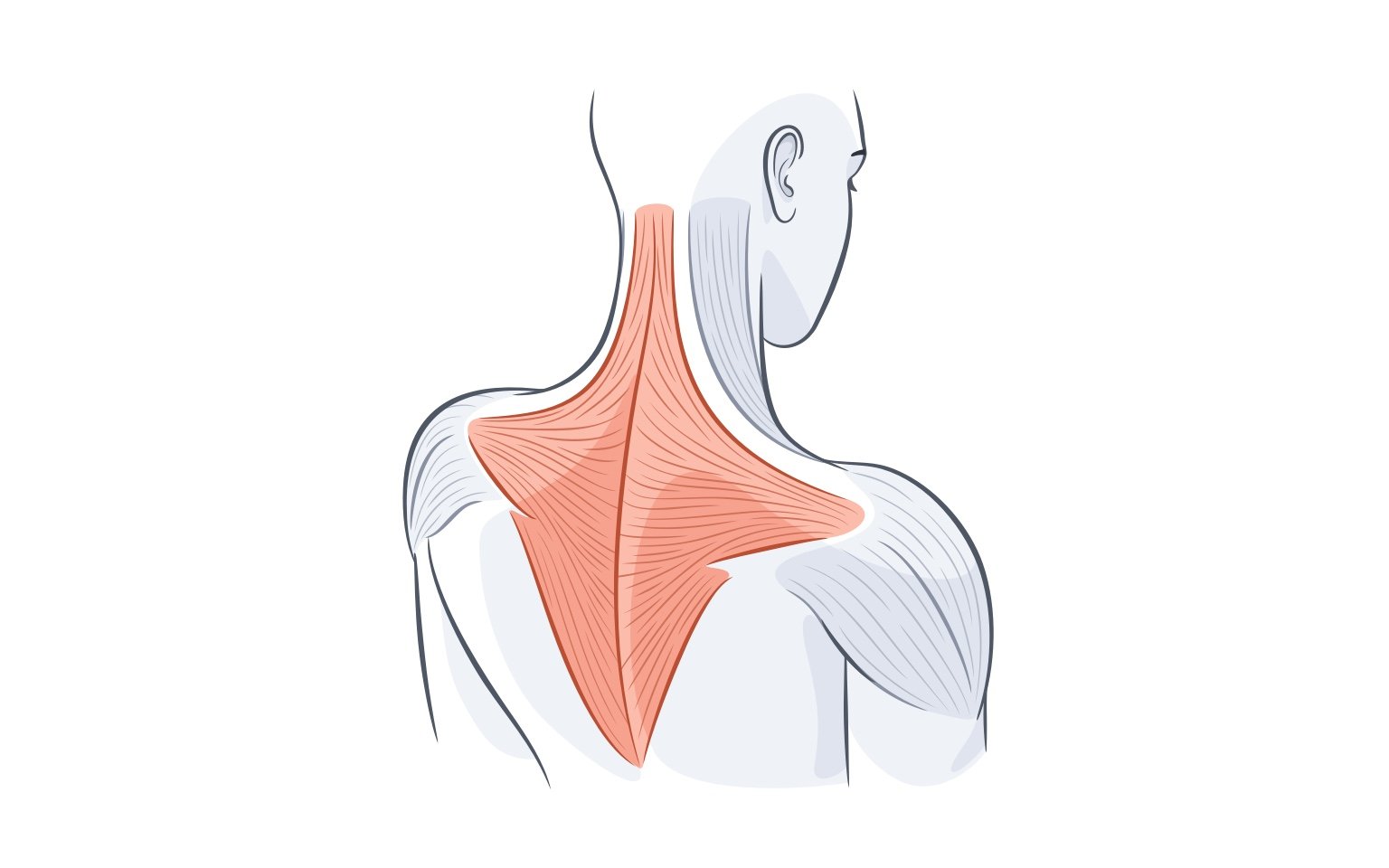
Your traps are responsible for moving your shoulders and assisting in the movement of your arms out to the side. Your middle and lower traps also help to retract and depress your shoulder blades.
Rhomboids
Your rhomboids are muscles in your upper back that sit under your trapezius muscles. Your rhomboids are crucial for upper back stability and posture, and allow you to pull your shoulder blades together.
The rhomboids are made up of two muscles – the rhomboid major and rhomboid minor. Together, these muscles form the ‘rhomboid’ shape. The rhomboid major is the larger muscle, and sits below the rhomboid minor.
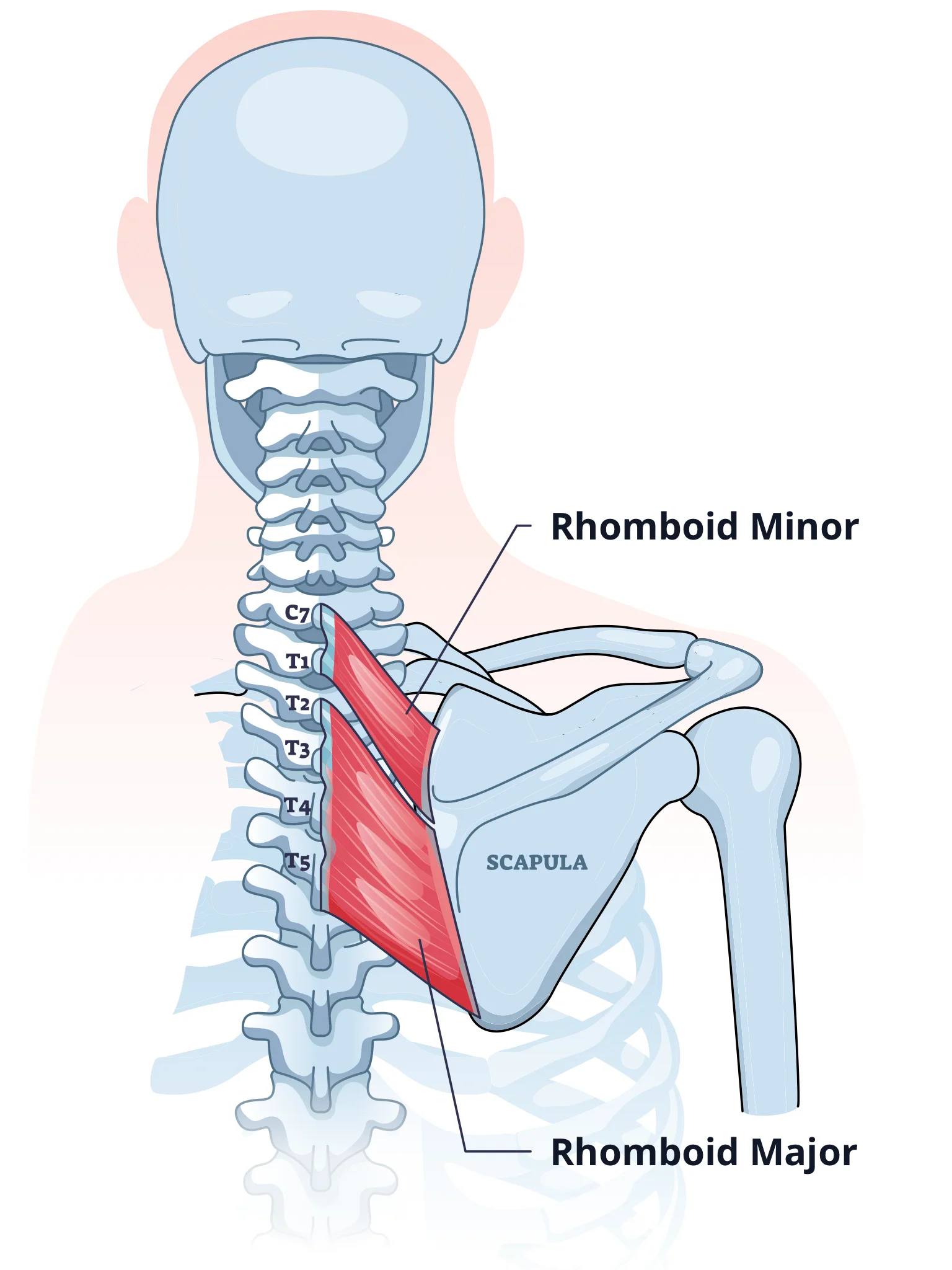
Rhomboids are much smaller than other muscles in your back. Your lats, for example, are the biggest muscles in your back and are much more powerful than your rhomboids. The lats help with pulling moves and everyday activities and exercises like swimming and pull ups. But while your rhomboids might be smaller, they play a critical role in stabilizing your shoulder blades.
Rear deltoids
Your rear deltoids, also known as posterior deltoids, are located at the back of your shoulders. They assist in pulling back your shoulders. Developing your rear deltoids can help you achieve a balanced and rounded shoulder appearance. Stronger rear deltoids can also help with posture and reduce the risk of shoulder injuries in other exercises.
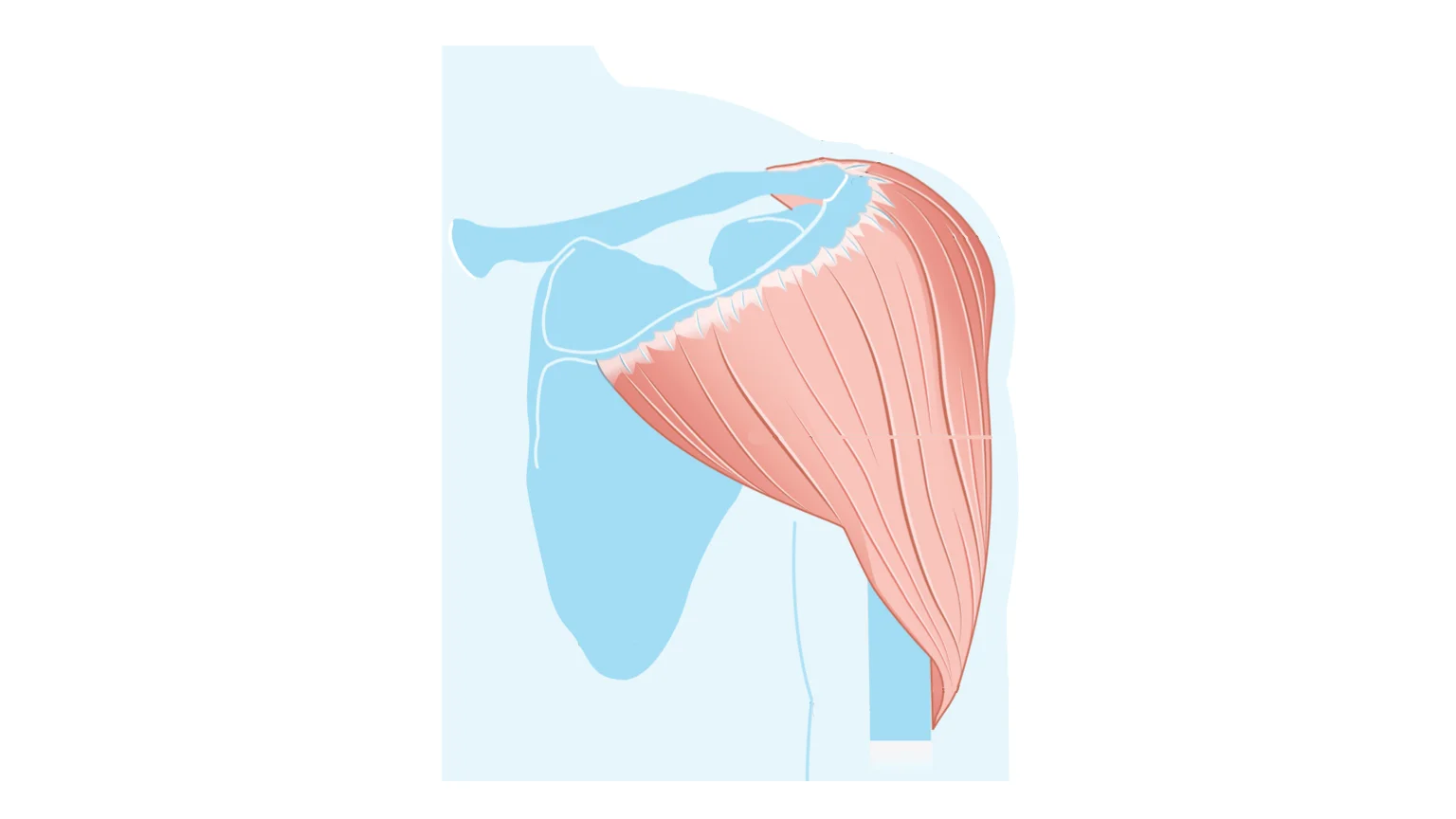
Your deltoids are made up of three parts – front (anterior) deltoids, side (lateral) deltoids and rear (posterior) deltoids. Side and posterior deltoids are worked on push day with exefcises like bench press and shoulder press.
But your rear delts are most effectively worked on pull day. Any movement that sees you move your shoulders back, including lat pulldowns, bent over rows and pull-ups, will engage your rear delts.
Teres major
Your teres major are the smaller back muscles located under your shoulder. Despite its size, it plays a key role in upper body function, including drawing your arms down and pulling them back, alongside your lats.
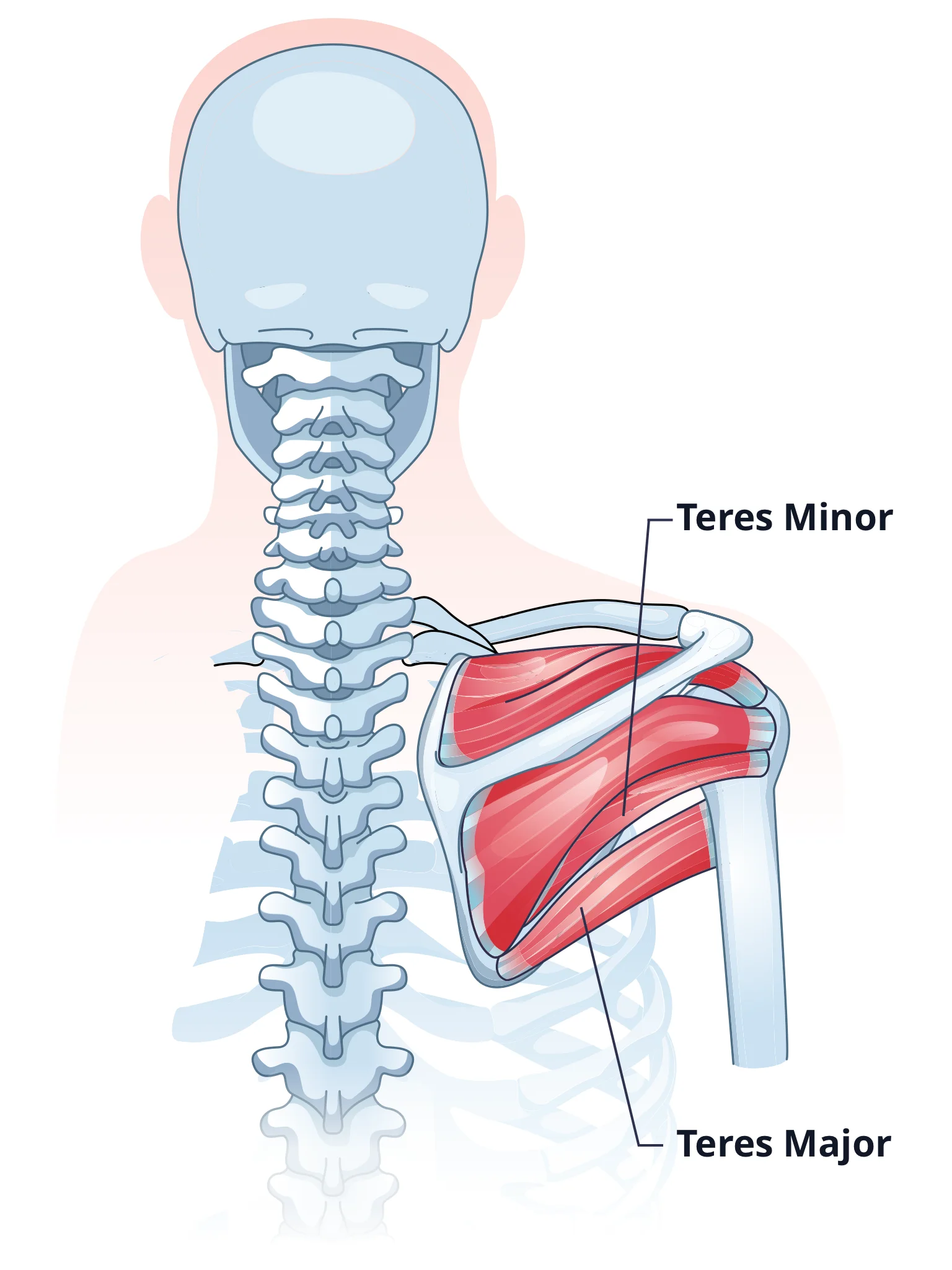
Strengthening your teres major can improve your shoulder mobility, increasing your range of motion in other shoulder exercises. Pull-ups and lat pulldowns are great exercises that engage your teres major.
Biceps
Your biceps are the large muscles on the front of your upper arms. Although your biceps is a single muscle, it is made up of two heads – called the long and short heads. Together, they play a key role in forearm flexion and rotation and strong biceps are beneficial for everyday activities and exercises.
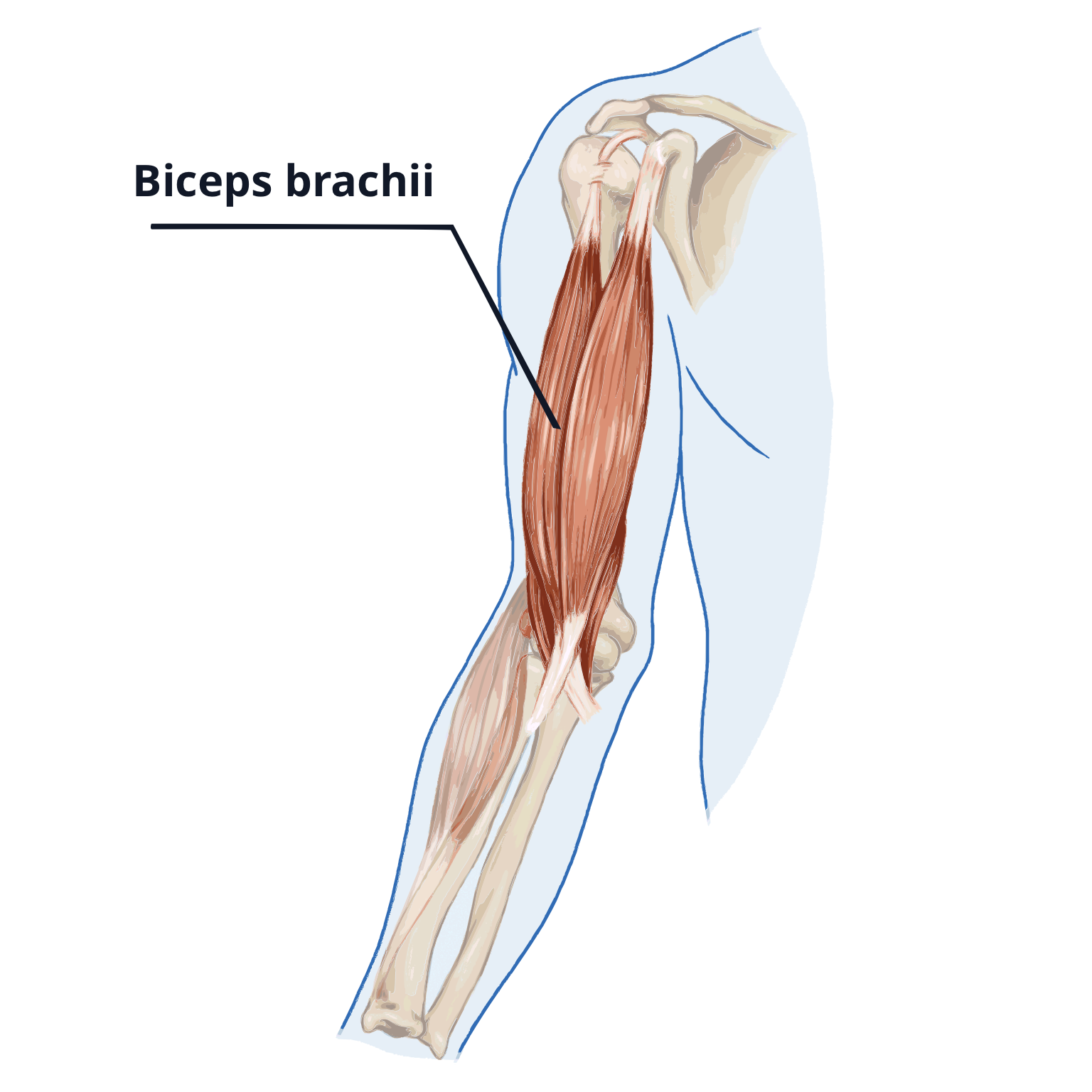
In addition to your biceps, pull exercises also work your brachialis, which is a small muscle beneath the bicep muscles, and your brachioradialis, which is a key muscle in the forearm.
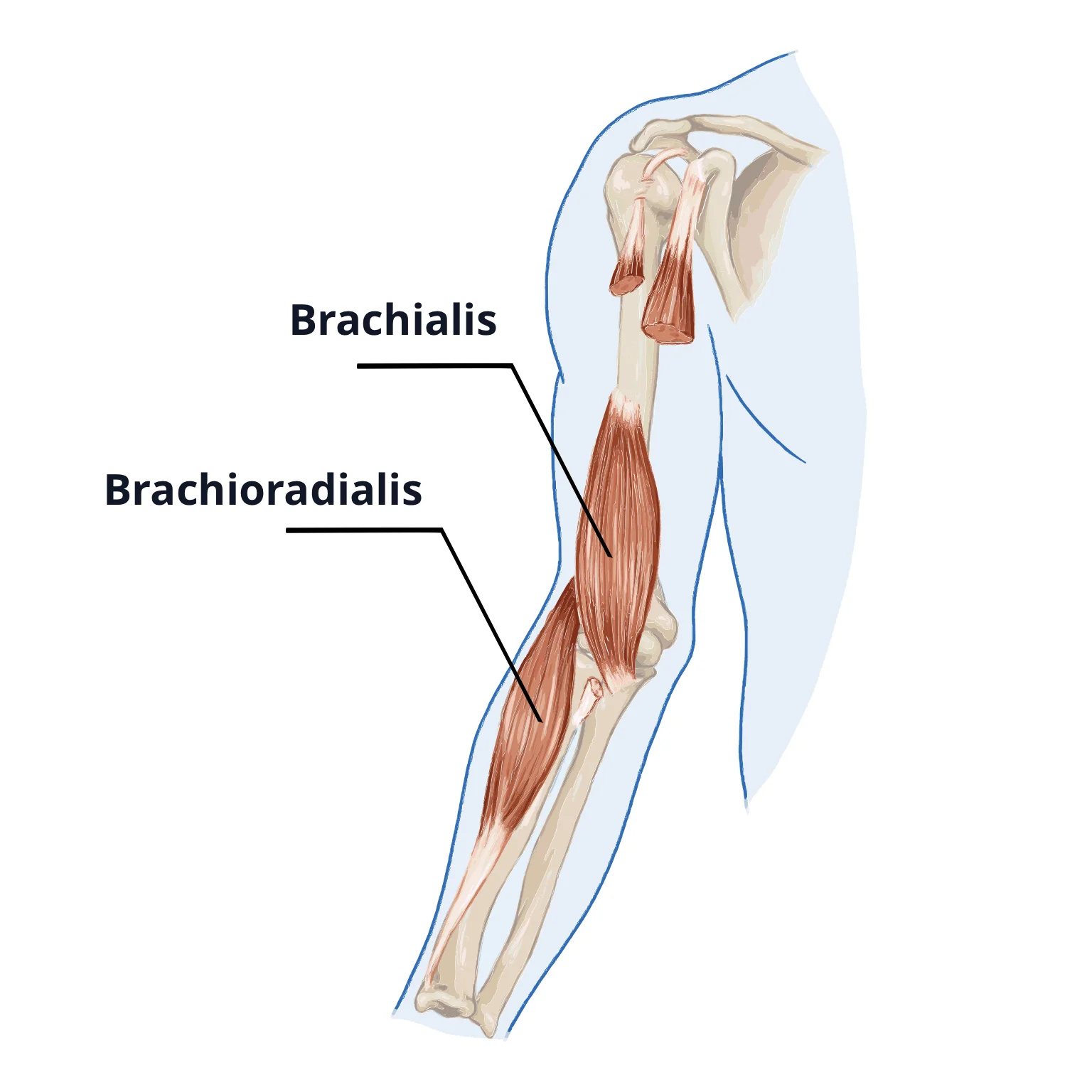
Planning your pull day
Pull day is part of the push pull legs (PPL) workout routine. You can train with PPL either 3 days, 6 days or even 5 days per week. That means you’ll be performing pull exercises once or twice each week.
A typical PPL schedule might look like this:
- Monday – Push
- Tuesday – Pull
- Wednesday – Legs
- Thursday – Rest
- Friday – Push
- Saturday – Pull
- Sunday – Legs
When planning your pull day, consider the following:
- Compound Exercises First – Compound exercises engage multiple muscle groups at the same time. This in turn makes your workouts more effective, both in terms of engaging more muscle and getting the most out of your time in the gym. It’s best to start with compound exercises as this will prepare your muscle groups for the more focused exercises later in the routine.
- Large Muscle Groups – Your largest back muscle is your lats, so plan your exercises to provide sufficient stimulus to your lats. Most pull day compound exercises will engage your lats as a primary muscle.
The Pull Day Workout
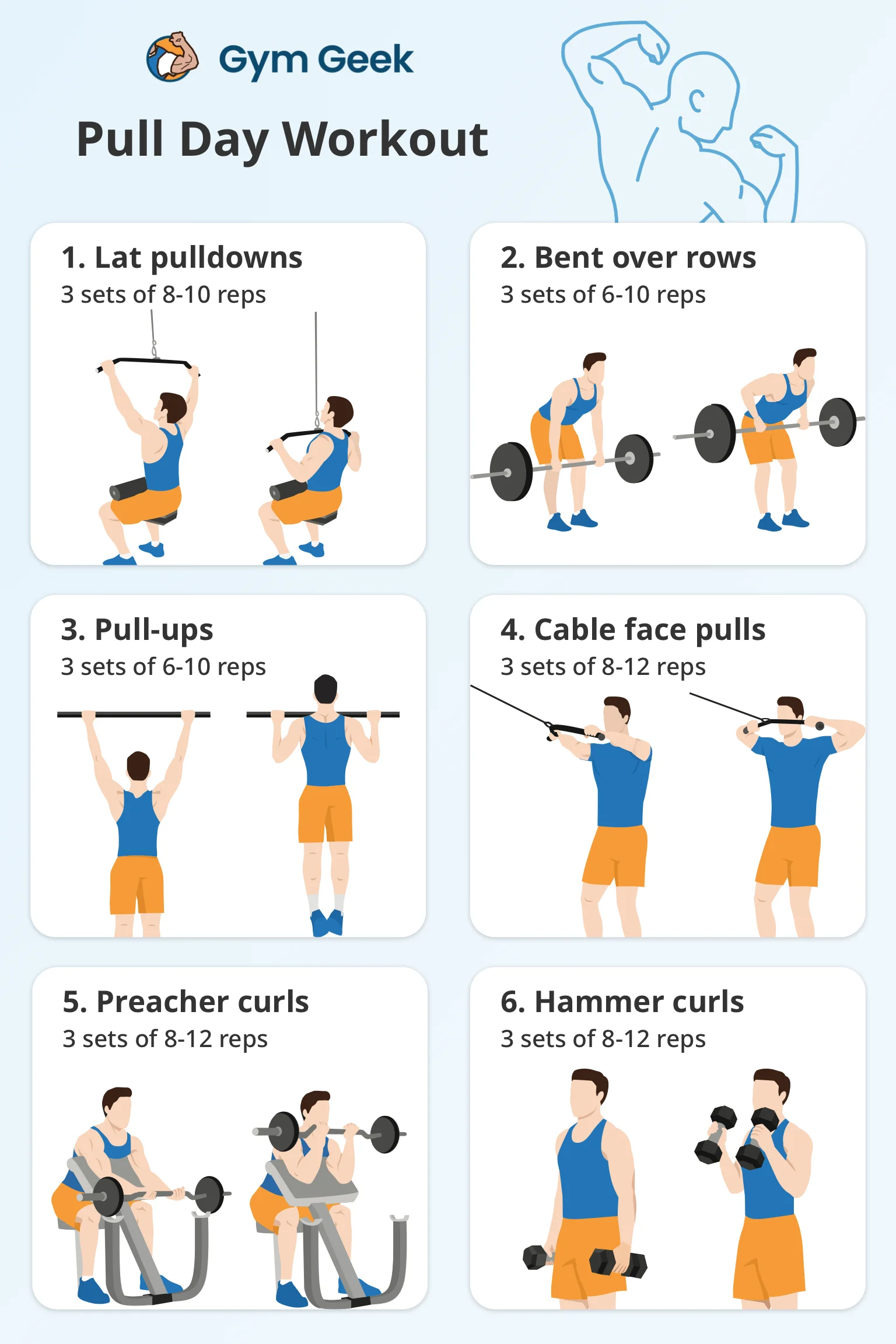
- Lat pulldowns – 3 sets of 8-10 reps
- Bent over rows – 3 sets of 6-10 reps
- Pull-ups – 3 sets of 6-10 reps
- Cable face pulls – 3 sets of 8-12 reps
- Preacher curls – 3 sets of 8-12 reps
- Hammer curls – 3 sets of 8-12 reps
Pull day exercises
Lat pulldowns
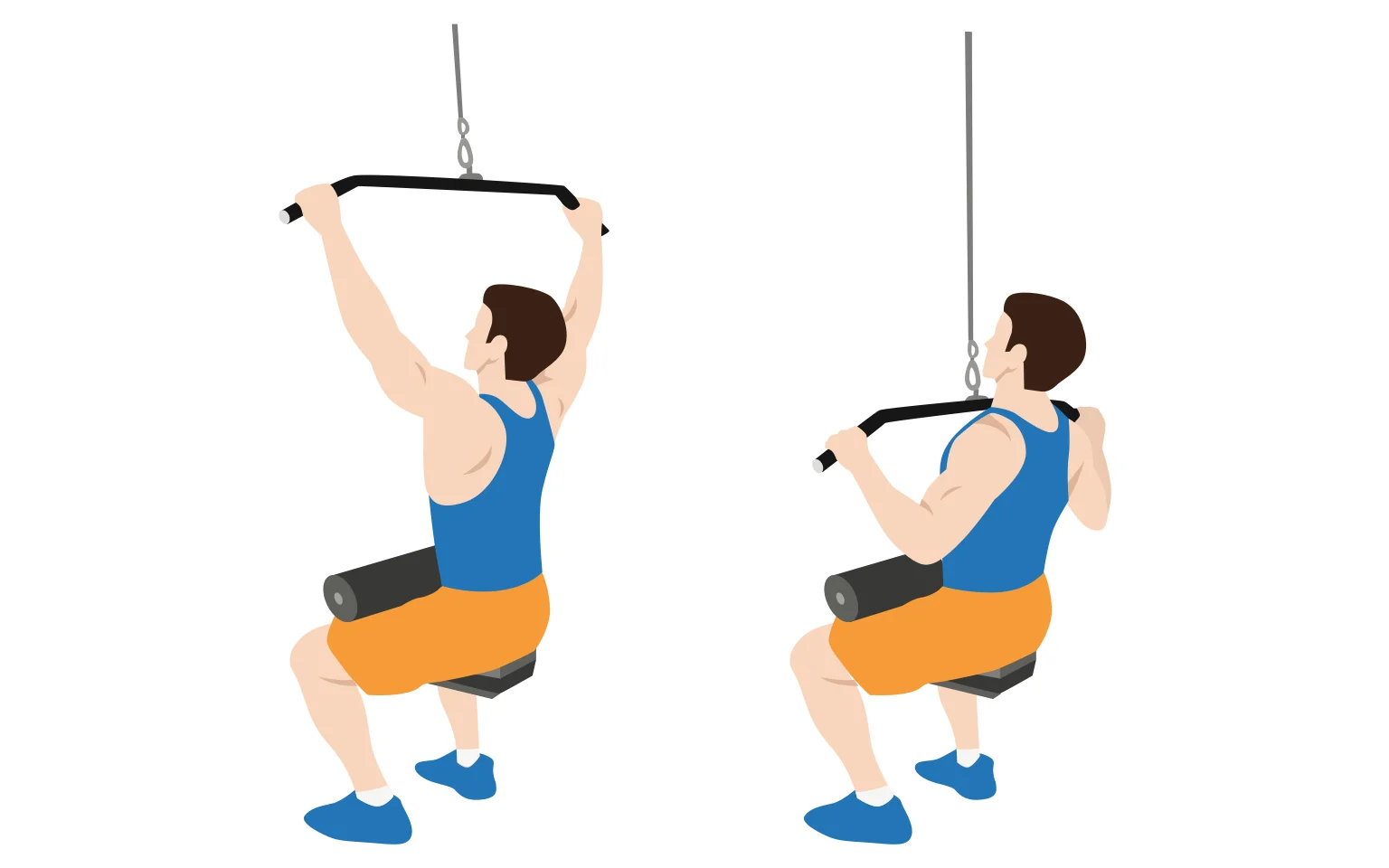
Why: Obvious from the name, the lat pulldown primarily engages your latissimus dorsi (lats) muscles. But it is in fact an effective compound exercise that engages your rhomboids, rear delts and your biceps, too. Lat pulldowns are a great exercise for developing strength and muscle mass in your upper body. Doing this exercise first will prepare your body for the subsequent exercises.
How to do: Sit at a lat pulldown machine. Grab the bar with an overhand grip, with your hands at shoulder-width apart on the bar. Pull the bar down towards your chest, keeping your back straight and your elbows close to your body throughout the movement. Squeeze at the end of the motion, then slowly return the bar back to the starting position.
Read more: How to Do Lat Pulldowns
Bent over rows
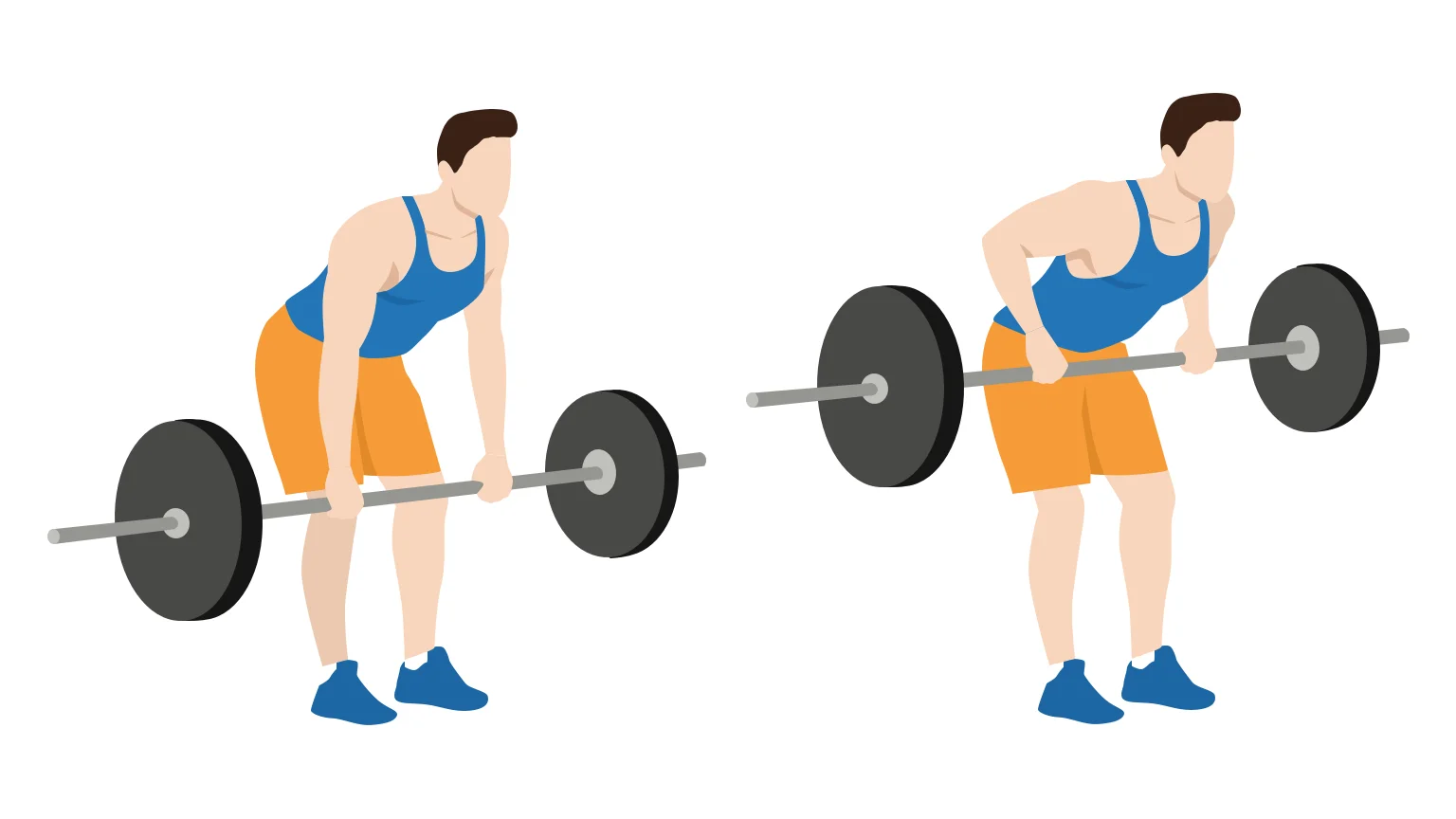
Why: Bent over rows is the second compound exercise, also primarily working your lats. This exercise also engages your rhomboids, traps, rear delts, biceps and forearms. As well as helping you build a strong and muscular back, bent over rows also improve your shoulder stability and enhance your overall upper body posture.
How to do: Stand upright with your feet shoulder-width apart. Hold a barbell at hip level with an overhand grip. Bending at your knees, hinge at your wait to push your hips back until your torso is almost parallel to the floor. Pull the barbell towards your chest, keeping your elbows tucked close to your body. Squeeze at the top of the movement, then slowly lower back to the starting position.
Read more: How to Do Bent-over Barbell Rows
Pull-ups
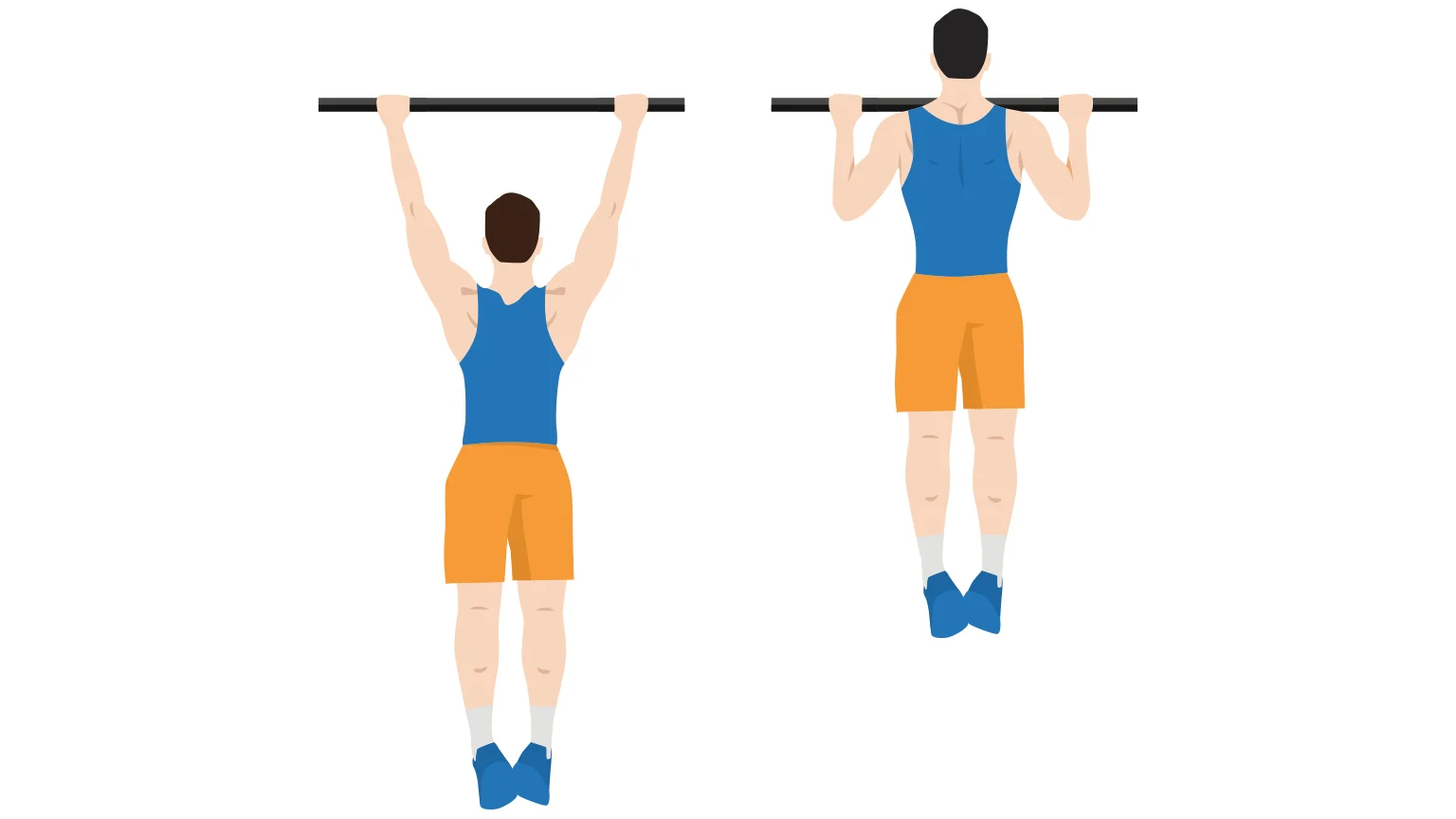
Why: Pull-ups work your lats, rhomboids and biceps. It’s a good idea to do pull-ups early in your workout when your energy reserves are maxed. Pull-ups and chin-ups are some of the most effective exercises for building upper body strength. They also improve your functional fitness, as the movement translates to everyday climbing.
How to do: Grab a pull-up bar with your hands shoulder-width apart and your palms facing away from you. Start by handing from the bar, with your arms fully extended and feet elevated from the ground. Pull yourself up towards the bar, keeping your elbows close to your body. Squeeze at the top, then slowly lower back to the starting position.
Read more: How to Do Pull-ups
Cable face pulls
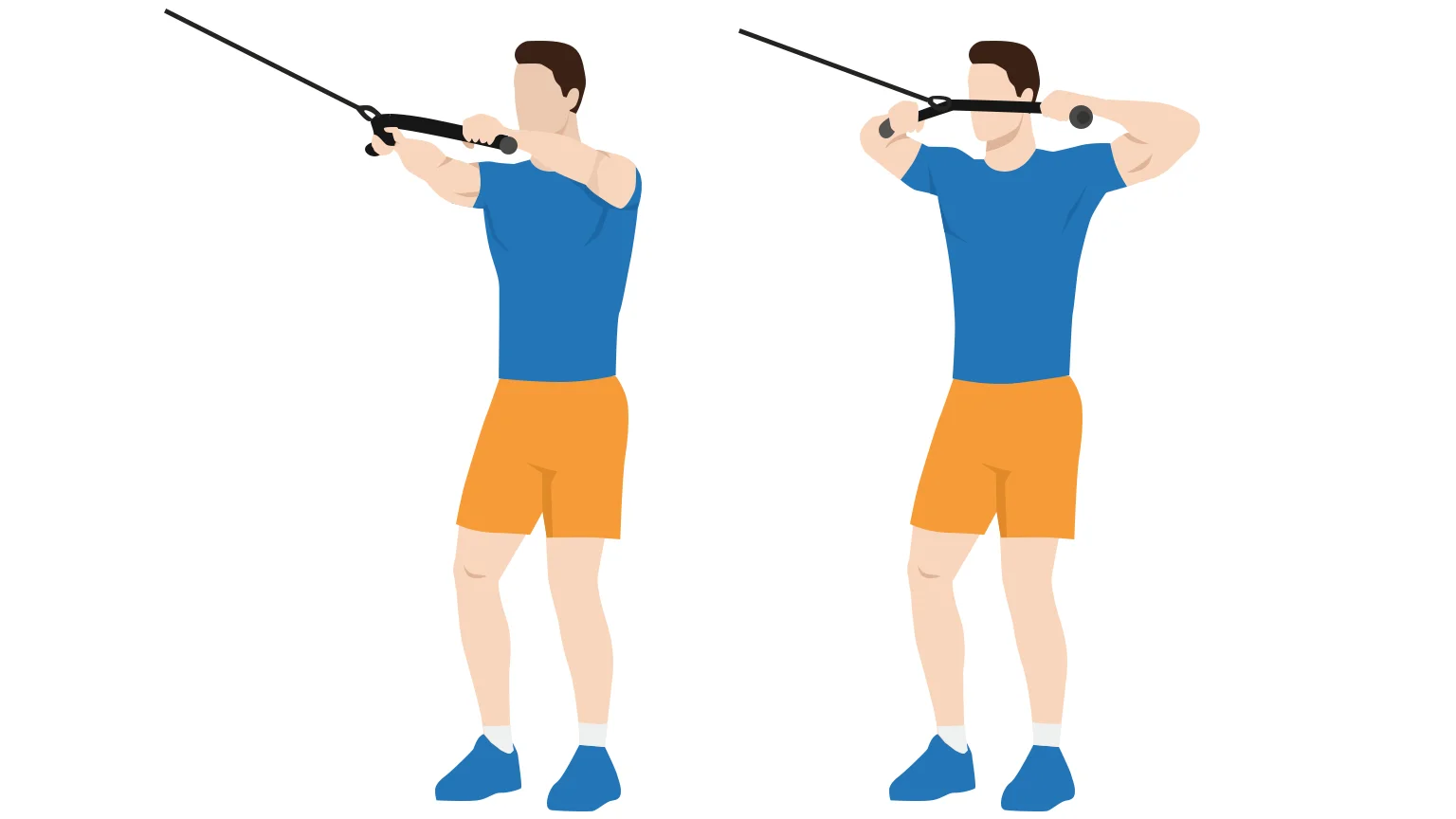
Why: Cable face pulls are a great exercise for targeting your rear (posterior) deltoids. Your rear delts can be difficult to isolate, so it’s a good idea to include an exercise like this in your pull day routine. The exercise also works your rhomboids and traps in your upper back and shoulders, as well as engaging your rotator cuff muscles. Strong rotator cuffs are crucial for shoulder stability.
How to do: Attach a rope handle to a cable machine. Standing back from the machine, hold the rope with both hands with your palms facing each other. Pull the rope towards your face, keeping your elbows raised and flared our during the movement. Squeeze at the end of the motion, then slowly return to the starting position.
Read more: How to Do Cable Face Pulls
Preacher curls
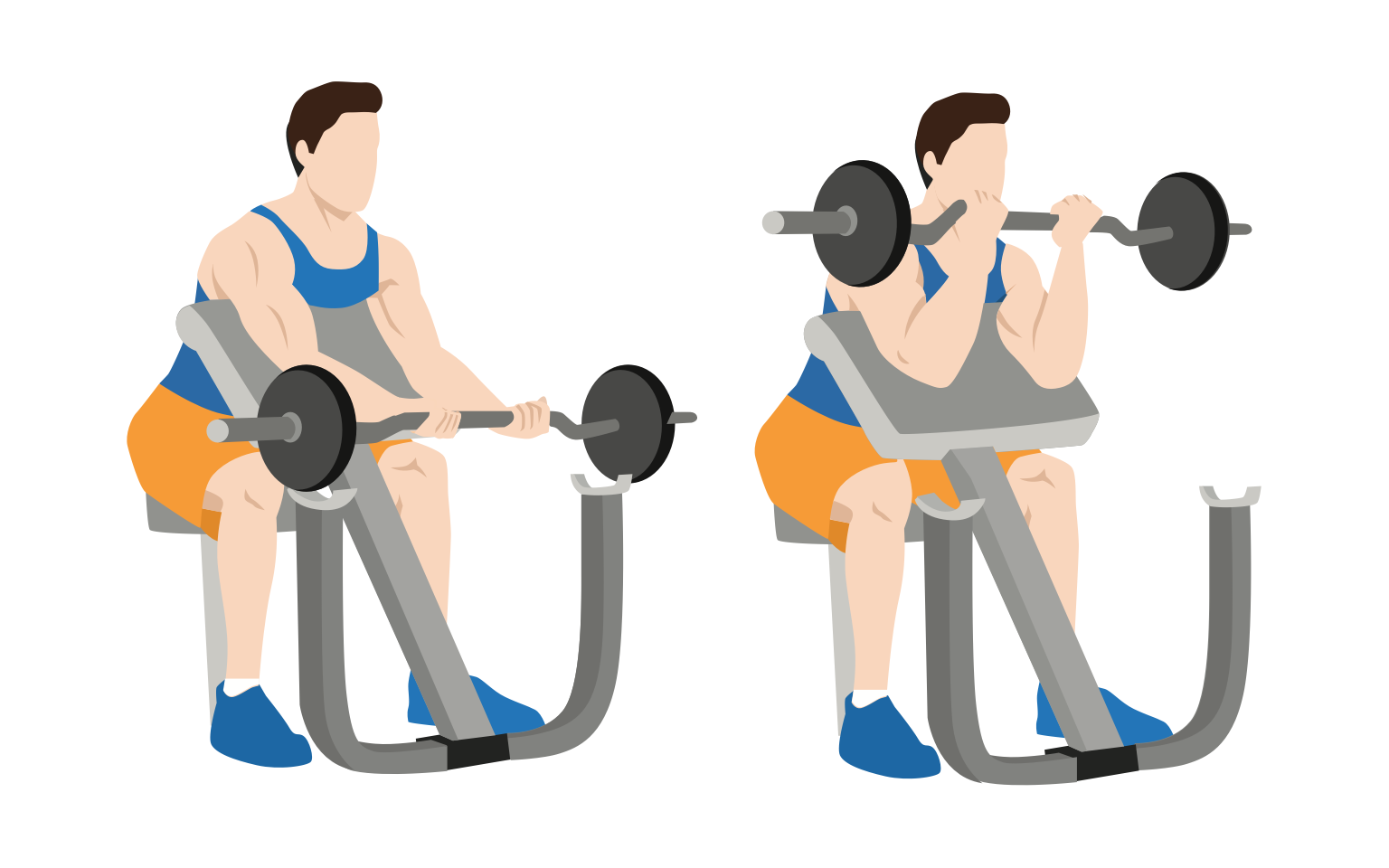
Why: Preacher curls are an isolation exercise that specifically targets your bicep muscles. Since most exercises on your pull day are compound exercises that also engage your back, it’s a good idea to include isolation bicep exercises to ensure your arms get fully worked.
How to do: Hold a dumbbell in one hand with your palm facing upwards. Rest your upper arm against the preacher bench pad. Curl the dumbbell up towards your shoulder, squeeze at the top of the movement, then lower back to the starting position in a slow, controlled motion.
Read more: How to Do Single Arm Preacher Curls
Hammer curls
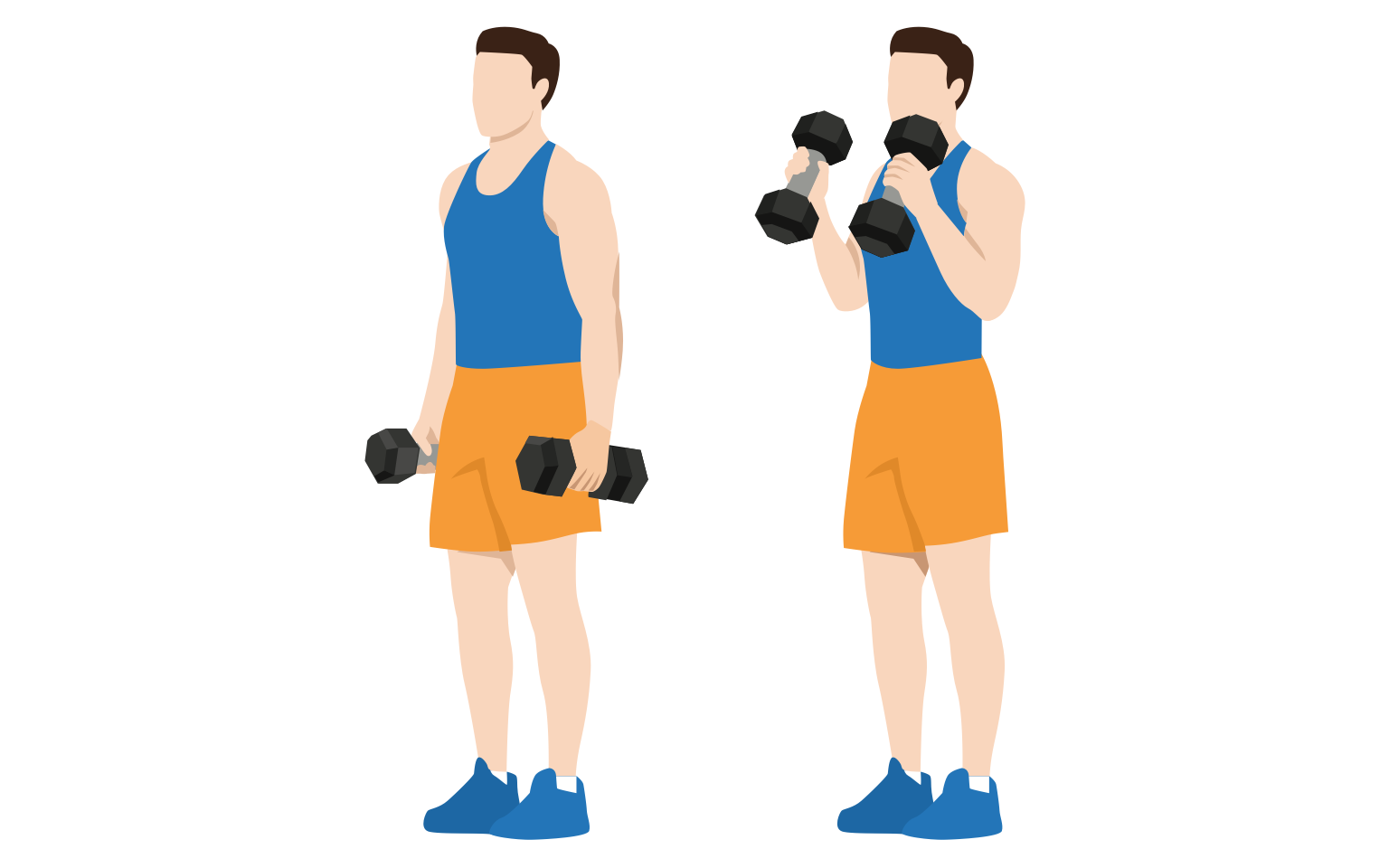
Why: Hammer curls are the second biceps isolation exercise on pull day. Hammer curls use a neutral grip position (palms facing each other) compared to preacher curls which use a supinated grip (palms facing forwards). This grip makes them more effective in working the long head of your biceps muscles. Hammer curls also target your brachioradialis and brachialis more effectively than other bicep curls.
How to do: Stand upright, with your arms by your side, holding a dumbbell in each hand. Your palms should be facing your body. Keeping your upper arms fixed, curl the weights up to your shoulders. Squeeze your biceps and lower back to the starting position.
Read more: How to Do Standing Hammer Curls
Tips
Warm up properly
Warming up before any workout routine is essential and the pull day routine is no exception. Warming up prepares your body for the full workout. It does this by raising your body temperature and increasing the blood flow to your muscles.
Start with light cardio, for example a jog for about 5-10 minutes to get your heart rate up. Follow this by some dynamic stretching that focuses on your chest, shoulders and tricep muscles.
Rest and recovery
Allowing enough time for rest and recovery is just as important as the workout routine itself. After a pull day, your muscles need time to repair and grow new tissue. Make sure you allow at least 48 hours between working the same muscle groups again.
For this reason, most people following push pull legs (PPL) do their pull day before their leg day.
